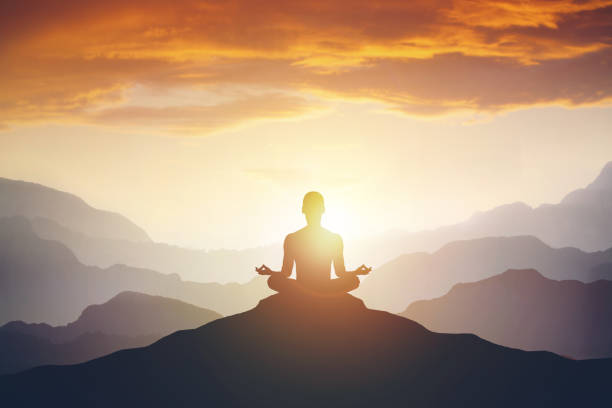
This article focuses on the author’s personal meditation experience. There are many forms of meditation; the key is to keep practising.
Meditation
Although it can be practised independently, meditation is most beneficial when performed after Qigong exercises (see Qigong part 1 and or 2 articles).
Benefits of Meditation
Meditation relaxes the mind allowing the nervous system to relax and perform optimally throughout the body with its neural matrix. You will notice a general sense of relaxation and clarity – especially during everyday stresses – improvement of vision, blood circulation, and experience an increase in energy. Your body should feel infused with vitality.
Meditation will strengthen your mind resulting in an increased ability to focus on daily tasks that require your attention. With practice, you will eventually be in a steady state of focus or awareness of every moment and appreciate the beauty of life and all that surrounds you.
Positions
Meditation can be started in various positions—lying on your back, sitting or standing. Each position is useful to assist the body.
Lying supine (on the spine) is considered a healing position and requires the least amount of energy to perform. It is common to fall asleep in this position, which is acceptable. The body heals optimally when in sleep mode or deep rest.
Sitting meditation is commonly known in pop culture. This position is favourable and requires more energy than lying supine. Getting comfortable is necessary to maintain this position for a meditation session. If the lotus position is uncomfortable at this stage (see photo), use a pillow under the buttock as support to help prevent pain and discomfort. Sitting in a chair is an alternative for those with leg or hip problems.
Standing meditation posture is common to martial arts, known as the warrior stance. This position uses the most energy to maintain balance with the pull of gravity. Rewarding in its own way, it is an alternative to the other two positions.
All three postures can be used to attain the desired results. Try each one to determine the benefits for you personally.
Meditation Practice
A Personal Experience
Sitting Position
Various teachers of meditation have influenced the author’s practice.
BEGIN, in a sitting position, with one hand on top of the other hand with thumbs crossing. Place hands just below the navel over the Danteen location (energy area). Perform four counterclockwise rotations around the navel with the hands and then repeat clockwise. This is performed to stimulate energy flow from this area. Return to the starting position.
Place the tip of your tongue on the roof of your mouth with slight pressure. Purse your lips so that a fine breath of air flows out.
Begin by breathing in slowly and naturally, without force, through the nose. The exhalation phase (breathing out) will occur passively through the mouth. Once you feel the heat in the Danteen area, imagine (as you breathe in) an energy flow travelling from the base of your spine, up the spine and over your head to the top lip. At the same time, feel the energy flow up from the navel to the bottom lip. As you exhale from your mouth, allow this energy to flow out. Begin a new breath in from your nose and continue the flow of energy up towards both lips. If you visualize this flow, you will eventually feel it. Do not reverse the flow down to the Danteen.
Focusing on the breath is the key to meditation for the beginner. This technique of bringing the energy to the lips helps focus on the breath.
Alternative techniques to help with focusing are to focus on the flame of a lit candle (in a lit room); focus on the exchange periods of your breath (the still point between breathing in and out).
It is common to drift away from focusing on the breath. Recognize it and bring yourself back to your breath focus.
End the meditation session, when ready, by rubbing your hands together, creating heat. Immediately place the hands over your face for a few moments. Repeat rubbing your hands and place them over the small of your back (kidney area). Then tap your body with your hands from head to toe to reawaken your body from the stillness of meditation. Your peace and stillness will vibrate throughout your day.
Open-eye Meditation
Open-eye meditation is helpful for those unable to sit in stillness. Examples of this type of meditation are washing dishes, going for a walk and gardening (be creative). These are tasks that require less cerebral activity. After a while of performing these tasks, the mind starts to relax and unwind, achieving a meditative state. Relaxing the mind is the goal of this practice.
Spend 1 minute to 30 minutes or more on meditation. If your time is limited, use a timer (that beeps) to keep you on track in your day. With practice come results!
